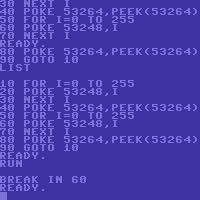Machine Language - PART VII

eZine lover (@eZine)
Published in
Machine Language Made Easy
· 24 Nov 2022
by Lyle Giese (LYLEG on DELPHI) It looks like this month we will finish up the Sequential File Reader. So what will I do next month? Let me know what YOU want written about. I really want to write about something that will interest you, and the best way to do that is to tell me! My DELPHI username is LYLEG, and if you are on Genie tell deb! and she will forward the comments to me. When we left off last month we just opened the file to be read and now are ready to decide if we want to send it to the printer or the screen. Of course, we first print a message to the screen asking Screen or Printer? In line 1280, we get a character from the k...


